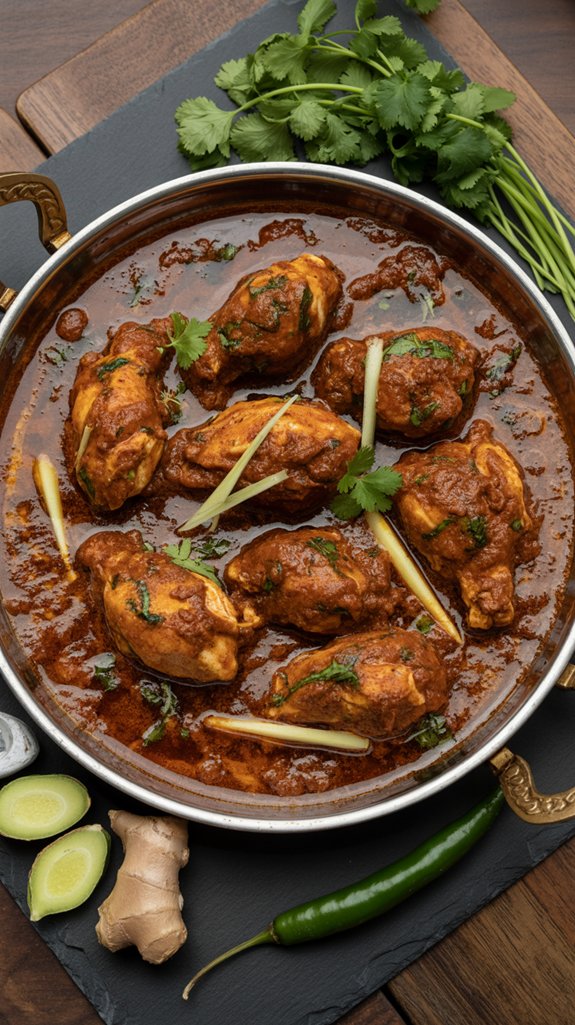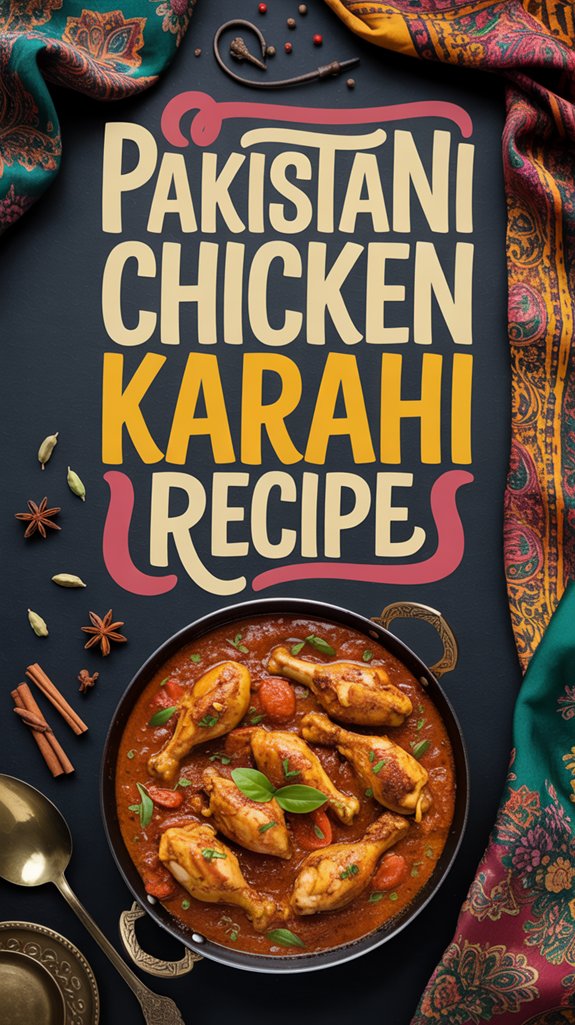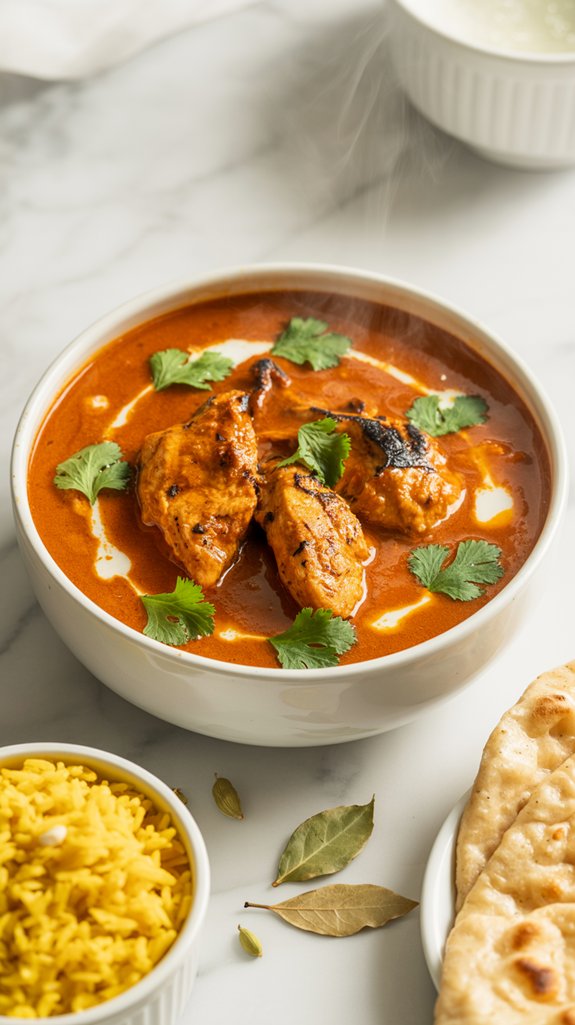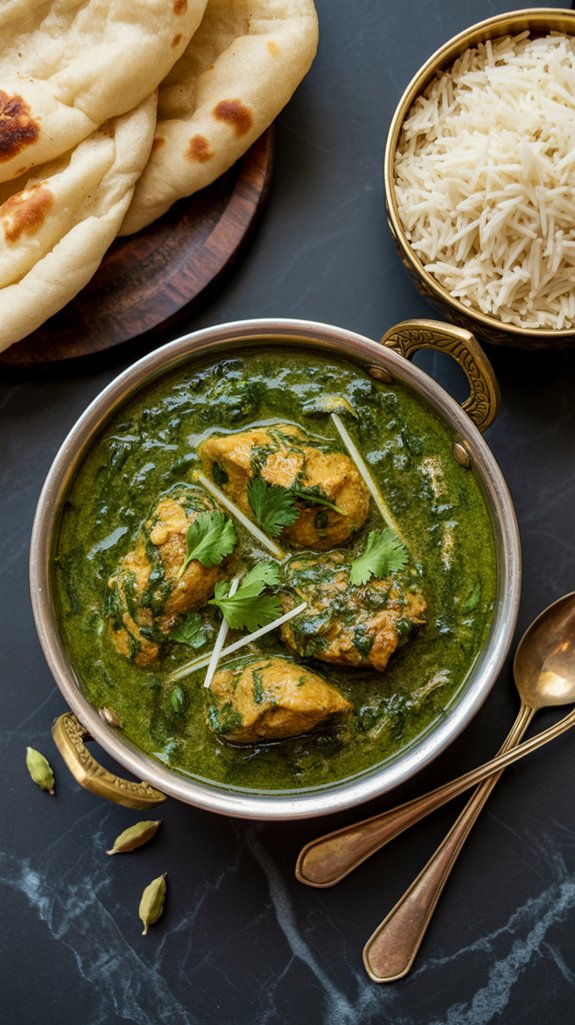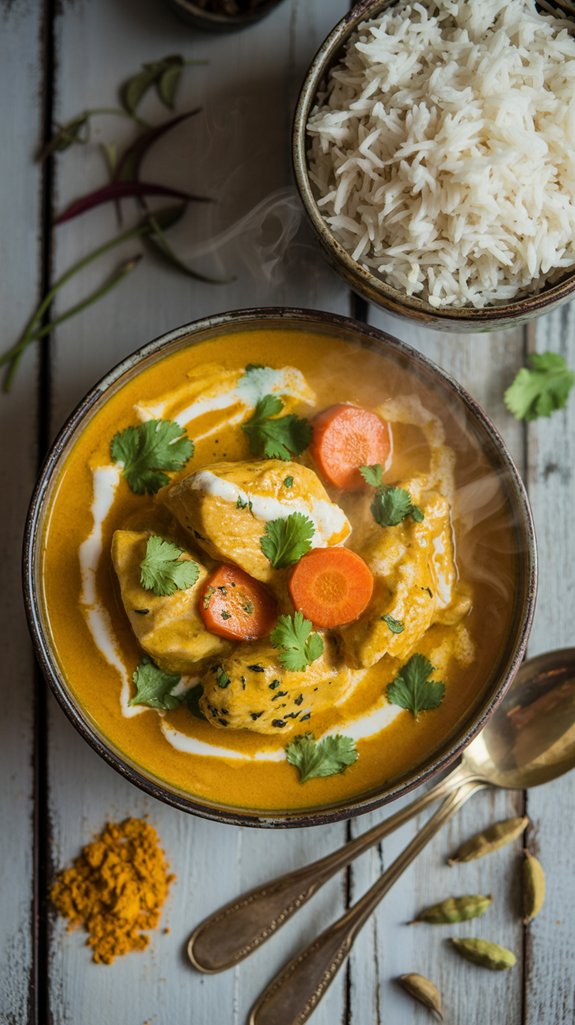Why You’ll Love This this Sizzling Pakistani Chicken Karahi
This Pakistani Chicken Karahi brings all that smoky, tomato-rich flavor you’ve been craving, with tender chicken pieces swimming in a sauce that’s basically liquid comfort food.
The beauty lies in how the oil separates and rises to the top—that’s your signal that you’ve hit karahi perfection, folks.
Fresh coriander, green chilies, and a squeeze of lemon finish things off with a brightness that makes every single bite feel like a little celebration.
Ingredients List
Here’s everything you’ll need to create this absolutely soul-warming Pakistani Chicken Karahi that’ll have your kitchen smelling like pure magic.
- 2 kg chicken (in pieces)
- 1/2 kg tomatoes
- 10-12 pieces green chilies
- 1 cup fresh coriander
- 1 cup yoghurt
- 1/2 cup butter
- 1/2 cup cooking oil
- 1/2 teaspoon salt
- 1 teaspoon cumin seed (zeera)
- 1 teaspoon dried coriander
- 2 teaspoons dried fenugreek leaves
- 1 teaspoon black pepper (crushed)
- 1 teaspoon garlic paste
- 1 teaspoon ginger paste
- 2 teaspoons crushed red pepper flakes
- 1/2 teaspoon garam masala (grounded)
- 1 lemon
Health Considerations:
- This recipe is pretty generous with oil and butter, so it’s definitely more of a comfort food situation than a light dinner option
- The yogurt adds some probiotics and helps balance out all that richness
- Fresh ingredients like ginger, garlic, and coriander bring antioxidants to the party
- You could easily cut back on the oil if you’re watching your intake, though you might lose some of that traditional karahi magic
Step by Step Directions
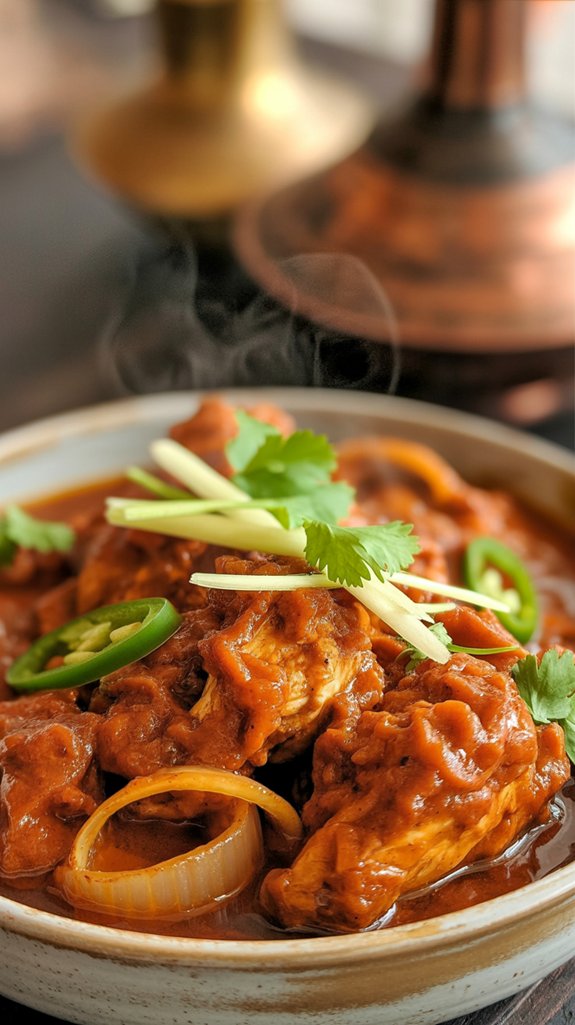
Get ready to create this aromatic Pakistani Chicken Karahi by following these traditional cooking steps that build layers of incredible flavor.
- Heat oil and butter in a wok over medium-high heat.
- Add chicken pieces and fry until golden brown, then remove and set aside.
- In the same oil, add garlic and ginger paste and stir fry for 3 minutes.
- Add diced tomatoes and fry until they break down and become saucy.
- Add salt, cumin seeds, dried coriander, black pepper, crushed red pepper flakes, and garam masala – fry for 2-3 minutes.
- Return the fried chicken to the wok and add yogurt.
- Stir everything together and cook for 8-10 minutes until chicken is fully cooked.
- Cover with lid and let it simmer until oil rises to the surface.
- Add dried fenugreek leaves, chopped fresh ginger, lemon slices, fresh coriander, and green chilies.
- Cover again and cook on low flame for 5 minutes to let all flavors meld together.
- Remove from heat and let it rest for a couple minutes before serving.
- Serve hot with homemade chapati or roghni tandoori naan.
For the most authentic results and superior heat retention, consider using Korean cast iron cookware which provides excellent temperature control for this traditional dish.
Substitutions and Variations
Protein Swaps That Actually Work
- Turkey pieces work beautifully here, though they cook a bit faster so keep an eye on them.
- Lamb or goat meat creates an incredibly rich version, but you’ll need to simmer longer for tenderness.
- Bone-in chicken thighs instead of mixed pieces give you more flavor and stay juicier.
Spice Level Adjustments
- Cut the green chilies in half for milder heat, or go wild and double them if you’re feeling brave.
- Swap crushed red pepper flakes for paprika when cooking for kids, they’ll never know the difference.
- Add a pinch of sugar to balance things out if your tomatoes are particularly tart.
Ingredient Substitutions When You’re Missing Something****
- Greek yogurt works perfectly fine instead of regular yogurt, just use a bit less since it’s thicker.
- Ghee can replace the butter and oil combo for a more traditional taste.
- Fresh cilantro stems, finely chopped, can substitute for some of the dried coriander.
- Can’t find fenugreek leaves? A tiny pinch of maple syrup adds that same subtle sweetness.
Creative Twists on the Classic
- Toss in some bell peppers with the tomatoes for extra color and crunch.
- A handful of cashews thrown in during the last few minutes creates this lovely creamy texture.
- White karahi uses cream instead of tomatoes, completely different atmosphere but equally delicious.
Additional Things to Serve With This Dish
Pakistani chicken karahi really shines when you surround it with the right supporting cast of sides and breads.
The Bread Situation
- Fresh naan, whether it’s plain, garlic, or that buttery roghni style, soaks up all those gorgeous pan juices like a dream.
- Homemade chapati keeps things traditional and lighter, plus you feel very accomplished making your own flatbread.
- Basmati rice works when you want something to cut through all that rich, tomatoey goodness.
- Paratha adds extra indulgence because sometimes you just need more butter in your life.
Cool-Down Companions
- Raita with cucumber and mint provides that cooling contrast your taste buds will thank you for.
- Plain yogurt on the side works too, especially if you went a little heavy-handed with those green chilies.
- Sliced onions with a sprinkle of salt and lemon juice cut through the richness beautifully.
- Fresh cilantro chutney brings brightness and that herby pop.
Vegetable Sides That Make Sense
- Simple sautéed spinach or mustard greens keep the Pakistani theme going strong.
- Roasted cauliflower with just salt and turmeric won’t compete with your star dish.
- A basic cucumber and tomato salad adds crunch and freshness to balance all that cooked-down richness.
Drinks That Actually Help
- Lassi, sweet or salty, cools down your mouth between bites.
- Fresh lime water or lemonade cuts through the oil and spices.
- Even plain water works, honestly, because sometimes you just need to reset your palate.
Cooking Tips & Tricks (Chef’s Notes)
Getting this karahi right comes down to understanding a few key moments where everything can either come together beautifully or fall apart on you.
Fire Management is Everything
- Keep that heat high when frying the chicken initially, but once you add the tomatoes, dial it back to medium or you’ll end up with burnt bits stuck to your wok.
- When the recipe says “light flame” at the end, it really means low and gentle – this is where the magic happens as everything melds together.
- If your oil starts smoking aggressively, you’ve gone too far and need to pull back immediately.
The Tomato Game****
- Fresh tomatoes work better than canned here because you want them to break down naturally and create that thick, clingy sauce.
- Don’t rush the tomato cooking phase – they need at least 5-7 minutes to really soften and lose their raw edge.
- If your tomatoes aren’t breaking down enough, give them a gentle mash with your spoon while they cook.
Yogurt Without the Curdle Drama
- Room temperature yogurt mixes in way better than cold stuff straight from the fridge.
- Add it gradually while stirring constantly, not all at once in a big glop.
- If it does start to separate on you, don’t panic – just keep stirring and cooking, it usually comes back together.
Timing the Aromatics
- Those fresh green chilies and cilantro go in at the very end because heat kills their bright flavor.
- Dried fenugreek leaves are potent, so crush them between your fingers as you add them for maximum impact.
- That final covered rest period isn’t optional – it’s when all the flavors actually get acquainted with each other.
Nutritional Facts
This hearty Pakistani dish packs substantial protein while delivering bold flavors through its rich blend of spices and aromatics.
Per Serving (serves 6-8):
- Calories: 380-420 per serving
- Protein: 35-40g (primarily from chicken)
- Fat: 24-28g (from oil, butter, and chicken skin)
- Carbohydrates: 8-10g (mainly from tomatoes and yogurt)
- Fiber: 2-3g (from vegetables and spices)
- Sodium: 450-500mg
- Calcium: 80-100mg (from yogurt and spices)
- Iron: 2-3mg (from chicken and spices)
- Vitamin C: 25-30mg (from tomatoes, chilies, and cilantro)
Key Nutritional Highlights:
- High-quality complete protein supports muscle maintenance and growth
- Turmeric and other spices provide anti-inflammatory compounds
- Fresh herbs contribute antioxidants and vitamins
- Yogurt adds probiotics for digestive health
- Tomatoes supply lycopene, a powerful antioxidant
- Moderate fat content helps with nutrient absorption
- Relatively low in carbohydrates, making it keto-friendly when served without bread
Fun “Did You Know?”
Did you know? Karahi gets its name from the traditional wok-like cooking vessel it’s prepared in—a deep, circular pan with two handles that’s been used across South Asia for centuries.
I find it fascinating that this dish originated in the frontier regions between Pakistan and Afghanistan. The high heat cooking method creates those distinctive charred flavors you can’t replicate in regular pans.
What’s really cool is that karahi was traditionally cooked over wood fires, giving it a smoky essence. Today’s version maintains that authentic taste while adapting to modern kitchens perfectly.

